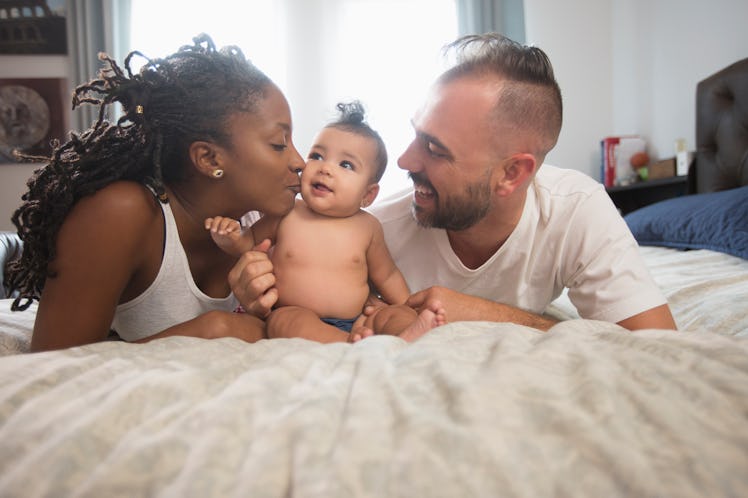What Age Babies Are The Cutest, According To Science
There is an exact age when kid cuteness is at a 10.

Newborns are ugly. Surveys suggest we don’t find babies particularly cute until 3 or even 6 months of age, when the awkward old man features give way to chubby cheeks and big eyes. They then remain at peak cuteness from 6 months until around age 4-and-a-half. But this raises a fascinating question. Why did we evolve to find infants and toddlers cuter than newborns? In other words, why are babies so cute but newborns ugly?
Logic would dictate that, because cuteness aids in survival, our offspring would have it in spades when they’re at their most vulnerable — shortly after birth. Shouldn’t biology have driven us to find the smallest babies the cutest? This is one of the main questions addressed by a recent study in Evolution and Human Behavior.
“We noticed adults rated the newborns as the least attractive, and the 6-month-olds had the highest ratings across all of the facial cues,” said study co-author Prarthana Franklin of Brock University in St. Catharines, Ontario, in a statement. “That was interesting because usually we think that the younger children are, the cuter they are, and so more people prefer younger children.”
For the study, Franklin and her team showed pictures of 18 different babies — newborns, 3-month-olds, and 6-month-olds — to 142 adults. They then asked how willing each adult would be to adopt the kids based on perceptions of their happiness, health, and cuteness. They found that 6-month-olds won the day, followed by 3-month-olds. Newborns were just not cute enough.
The researchers suspect that, since babies become more capable of surviving diseases at the 6-month mark, there’s a delay in parent-child bonding just in case newborns don’t survive. Meanwhile, people are hardwired to find older babies and toddlers the cutest so that parents will divert resources toward offspring most likely to survive.
“Hunter-gatherers who already had a child they were nursing, couldn’t nurse two children at once,” said coauthor Tony Volk, also of Brock University, in the statement. “If you’re a peasant mother in Medieval England and you only have enough food for one child, and if having two means they’re both likely to die, it’s best just to have one child. These are difficult decisions that humans have made for thousands of years.”
Of course, authors cannot say for sure how or why our perceptions of cuteness developed. And even if we do resist becoming attached to newborns, it’s not personal. But the findings do provide one potential evolutionary explanation for why we find newborns ugly — and why babies don’t hit peak cuteness until 6 months of age.
“A delay in attachment makes those early losses easier to cope with,” Volk says.
This article was originally published on